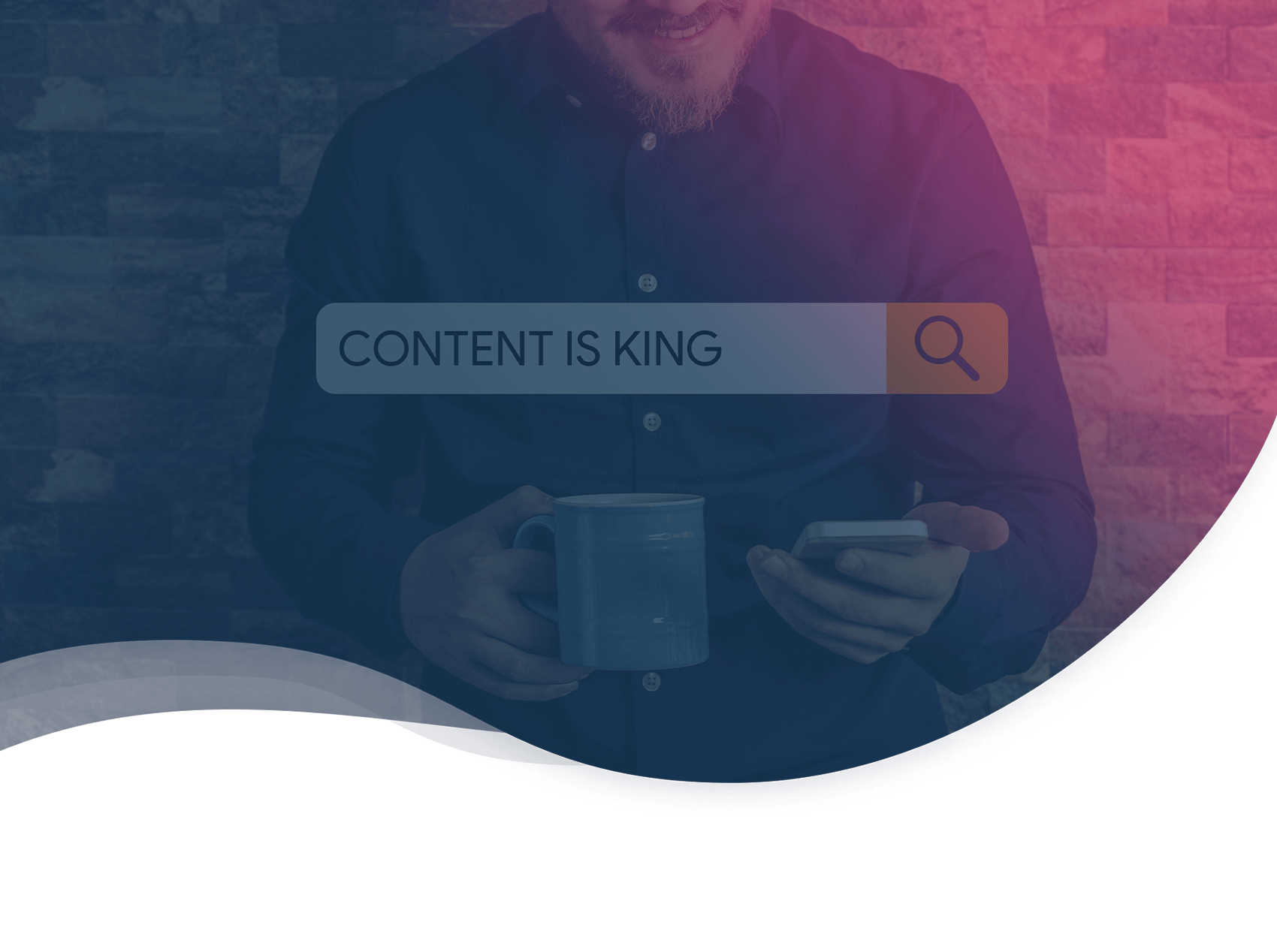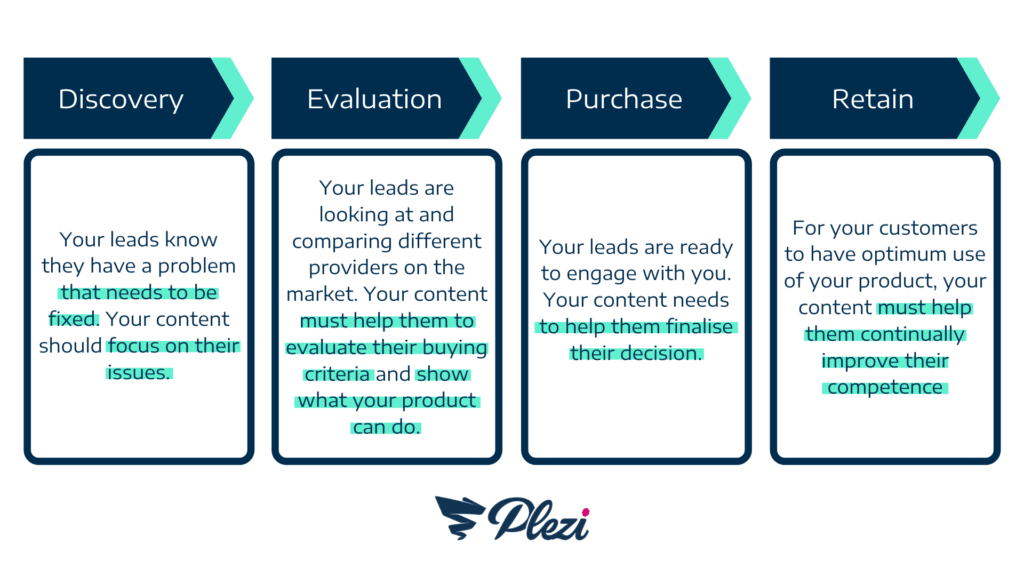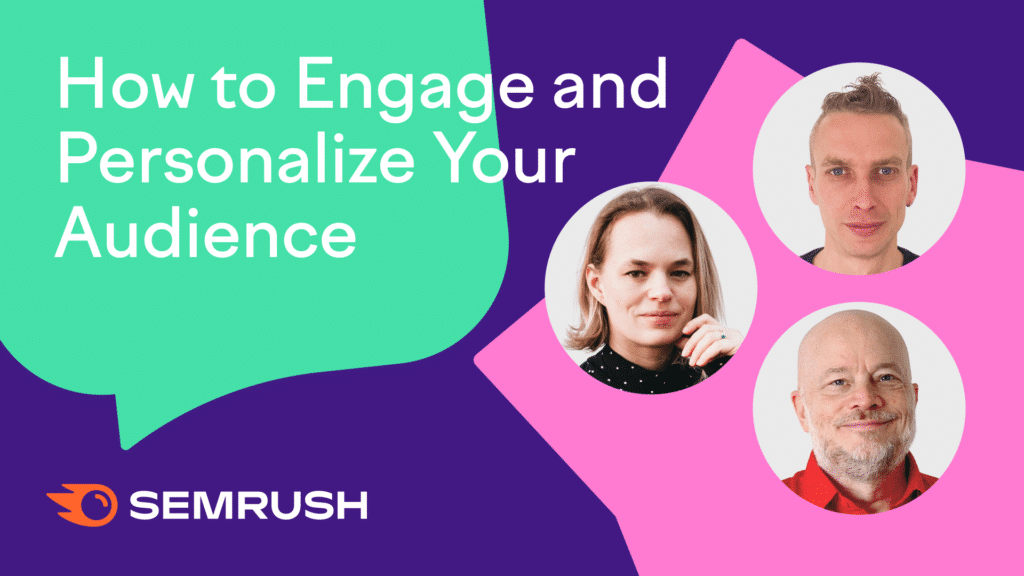There has been much talk within B2B lately about the importance of personalisation. The idea is for B2B marketing to become more human, to speak with a less formal voice, but also to create real engagement with prospective customers by personalizing your marketing messages.
However, understanding who your lead is, why they’re there, what they’re looking for, and to be able to speak directly to that person; all of this is extremely complicated. This complexity can grow depending on what kind of business you’re in, what kind of sector you’re in, how many different segmentations you have, how many different personas you have, and how many different offers you have on your website.
We were lucky enough to discuss this subject with SEMrush for a webinar recently. Hosted by Jason Barnard, CEO of Kalicube and with Kathryn Strachan, the managing director of Copy House, which is a content marketing agency specializing in technology and FinTech, we discussed how personalisation in marketing is a goal for B2B marketers and clients alike, but that no-one is really quite sure how to go about it and the best way to do it. If you want to watch the real thing – you can watch it on SEMrush’s website – but if you prefer to read through our recap here, you’ll learn all the main points below.
B2B vs B2C Personalisation
A lot of B2B marketers find personalization harder than B2C. The B2C journey is not the same as in B2B; it’s much more emotional in B2C. A survey found that 52 percent of people think it’s harder to reach out to decision-makers or their target market in B2B.
In B2B, if you can understand who your audience is and you can send them relevant messages, then you can really engage with prospective customers and build your brand. When we talk about inbound marketing and how you can use your site to engage with your visitors online, what we want to think about really is the journey that a lead takes in order for us to start thinking about personalization.
The statistics show that 94 percent of B2B journeys start online. Your website is where people come to understand your offer. As a marketer, your website is the most fundamental tool that you have for your company and for your brand. Your website can be used as a way to start engaging those visitors and start creating a relationship.
The B2B buyers journey
If you’re creating blog posts, webinars, white papers, podcasts, whatever it may be, then you’re probably already writing content that is relevant to your target market. Inbound marketing done well is when that lead magnet becomes a conversation and you’re able to take that lead on a journey.
That journey for leads is as follows:
- Discovery—someone comes to your website after looking up a problem they have.
- Evaluation—providing content that helps people evaluate their buying criteria.
- Purchase—helping people finalize their decision to buy through case studies and product-based content.
- Retain—sending your clients information about your product, getting their feedback, helping them improve their competence in your product, and telling them what your company is doing.
For the discovery phase, social media and blog articles are going to bring people to your site. Your blog articles, if they have the right kind of wording are going to get you higher up Google, and you’re going to get people coming through if they’ve got the problem that your product solves.
Once you get to evaluation, you’re getting on to more high-level quality content. Examples include a white paper, a webinar, a podcast, something that people have to really spend some time and engage with. it means that they’re already past that discovery stage and they’re starting to really look at what it is that you do.
Once you start to take prospects on that journey, you’re going to need to push them and trigger them through some sort of marketing automation. It’s going to be through some sort of workflow where you’re starting to convince them as to why it is that they should purchase the product from you.
What is personalisation (and what it is not)
Personalisation is not just getting someone’s name or company name in an email. This is more of an outbound marketing technique. But outbound marketing is time-consuming, it’s research-heavy, it’s cold, and it’s an interruption to someone’s day.
Personalisation is when you’re actually sending information to someone that they’re interested in. Real personalisation involves understanding who somebody is, how they first came to your site and what it is that are they interested in. Viewed through this lens, personalisation really comes down to segmentation.
The key to personalisation: segmentation
The key to personalisation with inbound is real segmentation. This means paying attention to where a lead has come from. Have they come in from an event, from webinars, from gated content, from blog articles, from newsletter signups, from contact forms.?
For each individual one, there’s a different journey and you need to be able to segment those leads so that the journey they go on is relevant to them.
You want to look at what content a lead is looking at. This can be broken down into various different pieces. So is it early stage articles? Are they downloading high-quality content? Where are they in the buying funnel? If you can segment your audience to understand what content to send next to them you’re basically onto some sort of personalization.
Then the next question is when to contact the lead? You need at that point, some sort of lead scoring which is going to tell you when they’ve hit the purchase part of that funnel so that somebody from your sales team can start talking to them.
Segmentation is key. It’s the key to personalization. It’s about having data but it’s also about having content to talk to those leads, to take those leads on a journey as we’ve been discussing, and content that is relevant to them. Personalization is when a lead basically thinks, “Ah, that’s interesting. I was looking at that.”
And they’re going to click on it and they’re going to come back into your site.
If you can start to do that then you can really start to talk to the leads that you want to speak to.
Advanced Personalisation
Now some of you may be thinking – okay so, I need to segment, I need to know where they came from ) what channel – and I need to treat each one differently – I need to do a workflow. No!
If you created a workflow six months ago and it is still being sent to new leads now, is it still relevant, does it reflect your brand now, have your offers and content changed? How can you really tell what it is that someone needs after they joined one of your webinars last week, for example?
In fact, what a workflow is supposed to do for a marketer is automate steps to nurture a lead, while they concentrate on something else. What it often turns out to be, however, is an inexact art that is tremendously time-consuming, and finally – once those messages are sent out – could end up alienating the very lead you wanted to impress.
So – this is where you have to have a tool that can do something similar for you – and with Plezi, we have what we call our Smart Campaigns. Smart campaigns know what segment a customer is in, where they are in the buying funnel, and what content to send to them according to that criteria.
Again – let’s just define real personaliastion – if you are sending prospective leads value ideas, quality content that they are interested in, content perhaps that is purpose lead, that they can make use of or do something with – they will feel like you understand who they are and what they are looking for.
With Smart Campaigns you keep control over a whole range of parameters that enable you to tailor it.
If you are able to do this throughout your different person’s and segmentations, if you can create some sort of campaign to get relevant messages to people – this is how you perosnalise your marketing and get them engaged. Plezi’s Smart Campaigns allow you to do this in. way that is ismple to set up and extremely effective in terms of nurturing.
Question and Answers
With the presentation finished, the webinar moved on to a question-and-answer session.
How to deal with the complexity of having multiple personas to segment?
It’s really important that when you’re creating your buyer personas and when you’re creating your strategy, you are realistic about what you can achieve. It’s fine to have five personas if you can market to them in an intelligent way.
Perhaps they have similarities so that you can align your content that only speaks to two personas rather than just one. It is important to not go over the top when you’re creating these segments. Pick the two or the three that are the most important for you especially if you’re a small to medium team.
Is it worth being slightly off-brand in order to personalise messages?
Everything that you do should be thought about in terms of the language that you’re using, in terms of the messaging that you’re using, in terms of the title of whatever piece you’re doing. It needs to speak to your target audience because that’s the thing they’re going to see first.
You could do something really crazy and “out there” and throw it up on social media. You’re going to get quite a lot of people but you may have to just then throw all of them away or you may have to sift through them with lead nurturing.
All brands should start at the beginning by thinking about who those customers are. Build a brand from a messaging content perspective, and that always starts with your audience and who you’re talking to.
Good content marketing is about creating conversations and building relationships and nurturing those relationships so that somebody can go from not knowing who you are to buying from you and then being an advocate of your brand. You can’t do that if you’re trying to appeal to the masses or not thinking about who you’re talking to.
What are some tips for offline personalisation?
Taking things offline and sending things to people’s homes is a very effective way because you’re communicating with them on a different channel. However, things like a blanket maildrop to thousands of people is the same as sending a mass email; it’s not personalisation.
It’s less about the medium (e.g postcards) and more about the messaging within that medium. As with online personalization, make sure that that content aligns with customer personas customer pain points. Understand who you’re talking to, regardless of how you’re actually sending those messages out.
Marketers are in a tough position because they try to do so much with so little. When you’re trying to market at scale, it’s very hard to keep it focused on the customer and keep personalizing it if you don’t have lots of time. It’s about being smart and having the right technology to support you so that some of those more tedious tasks can be automated. Use technology to actually get rid of the difficult, very repetitive work. Focus on the human being.
If you have multiple personas that are too similar, do you get confused?
It’s good to have some overlap because then you can create pieces of content that might speak to two or more. It’s worth wondering how different they are; is it just the job title that’s different or are there other things that are different about them? Perhaps if it’s just something like a job title, you can combine those personas.
What it comes down to is the essence of somebody. The pain points, the psychological triggers, the emotional state that they’re in are far more important than male, female demographics, age, and other top-level details.
It’s more about getting beneath the surface, digging deep, really thinking about what it is that’s keeping them up at night. What are they worried about? And what’s going to happen to them if that situation comes true? Then, think about how can you position yourself to solve that problem.
Keep trying things out!
Marketing is all about testing, reviewing results, and then refining. So marketing should be seen as this constant iteration of putting something out there, reviewing the results, gathering insights, and then refining what you’re doing.
If you’ve got content on your site, if you’ve got landing pages on your site, again, you’re going to constantly be looking at how well is that converting? How well is that doing? What kind of leads am I getting from that?
How to adapt messaging to the new normal?
What’s come out of this last year is the empathy behind marketing. Making sure that you message your customers in a way that they want to hear, bringing your messaging online. We’re spending more time online and brands that weren’t already digital-first are realizing the importance of it. What’s happened over the last year is kind of fueling a natural evolution.
You need to think about where your customers are and most of your customers are now going to be online. You need to be more personal. You need to be hyper-personalized if you like, you need to be more empathetic and you need to be helping to guide your customers through this. If we think of customers as a relationship, then it’s your job to help your customers transition to the new normal.
If you’ve got this far, you are probably pretty passionate bout this subject. Don’t hesitate to see the real thing on SEMrush’s website or check out our other webinars here!







